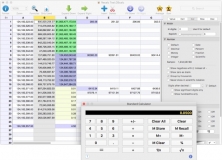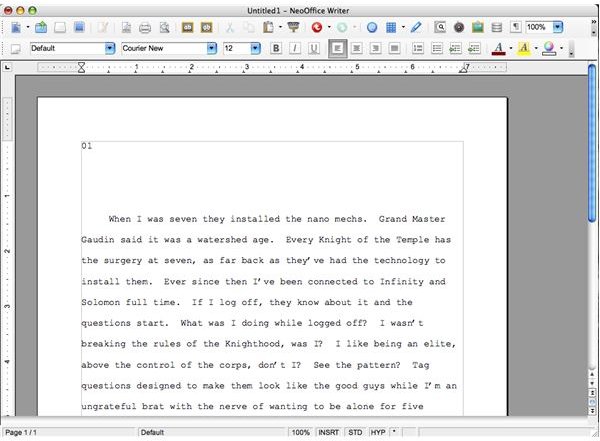

It may be time for computer users to organize a software user association to set our own policies on how software publishers will do business with us. Thanks to dwindling competition (for instance, the recent merger of Macromedia and Adobe), we get buggy, crippled products, little innovation, products rushed to market with little usability testing, and, of course, inflated prices.
NEOOFFICE REVIEWS MAC
Ken Alan – With regard to your story about software activation (“Stop, Thief!” Mac Beat, September 2005): yes, there are software pirates out there-the monopoly software publishers. Come on, Macworld: there are billions of people who would love the chance to do nonfrivolous stuff with an old Mac. But now you tell me that I could have used them for such valuable purposes as saving myself a walk upstairs to select a new playlist, or a walk across the room to turn lights on and off. Peter Marmorek – Foolish me! Here I’ve been giving my old computers to charities, Third World countries, or underfunded inner-city schools. The old PowerLinc USB worked fine, but who wants to leave their computer on all the time? I have e-mailed Smarthome a number of times and followed their recommendations each time, but with no improvement. Having everything else (printer, external USB drives, and even my cable modem) off or disconnected seems to help.
NEOOFFICE REVIEWS DRIVERS
The problem is that even with all the updates to Indigo and its drivers installed, even after upgrading to OS X 10.4.2, and even after reinstalling Indigo and connecting the controller directly to the USB port, Indigo finds that controller only about once in 20 tries-and usually only after a full restart. Hoffmann – I have used X10 for many years now and must say that, after trying Smarthome’s PowerLinc Controller USB, I’m about to give up on using my iMac to automate my home. The only drawback is that the old G3 can’t run OS X (even with XPostFacto), so we have to create all of our playlists “by hand.” But it’s still chugging along! Visitors to our office comment on our eclectic music mix, not to mention the random iTunes visuals on the monitor.

Over the years, we’ve accumulated nearly 4,200 songs (as well as sound bites from movies, comedy routines, old radio commercials, and self-recorded “promos,” to make it sound like a real radio station), taking up 14.5GB of space. About 5 years ago, we decided to load up an old 266MHz Mac with iTunes and some of our favorite music. We started with an FM radio nearly 20 years ago, and then upgraded to a CD changer. We’ve always enjoyed playing background music to make the day move along. I work in a college media-production department with four other highly creative people. Steven Minkler – Thanks for the great tips about converting an old Mac into a jukebox (“Old Mac, New Tricks,” Mac Gems Weblog, and occasional features such as September’s “50 Mac Gems.”-Ed. We try to cover as much of it as we can in our monthly Mac Gems column, our There’s a lot of great inexpensive software out there. Rather, it was a snapshot of 50 gems that we hadn’t been able to review previously but that we felt you should know about. The September article wasn’t intended to be-indeed, couldn’t be-a comprehensive look at bargain software for the Mac. Rob Griffiths mentioned NeoOffice in his May 2005 review of We didn’t include Cyberduck because it was included in November 2004’s roundup of bargain software,Įven More Software Bargains. It’s now my office application of choice. You can use the entire suite without limitations or being nagged to register, but after I’d used it for a while, I made a $20 donation to support the open-source project. I think it’s equal in every way to Microsoft Office, and it’s basically freeware. I was surprised that you didn’t include the Henry Schaechterle – In your September issue, you covered 50 low-cost applications for the Mac.


 0 kommentar(er)
0 kommentar(er)
